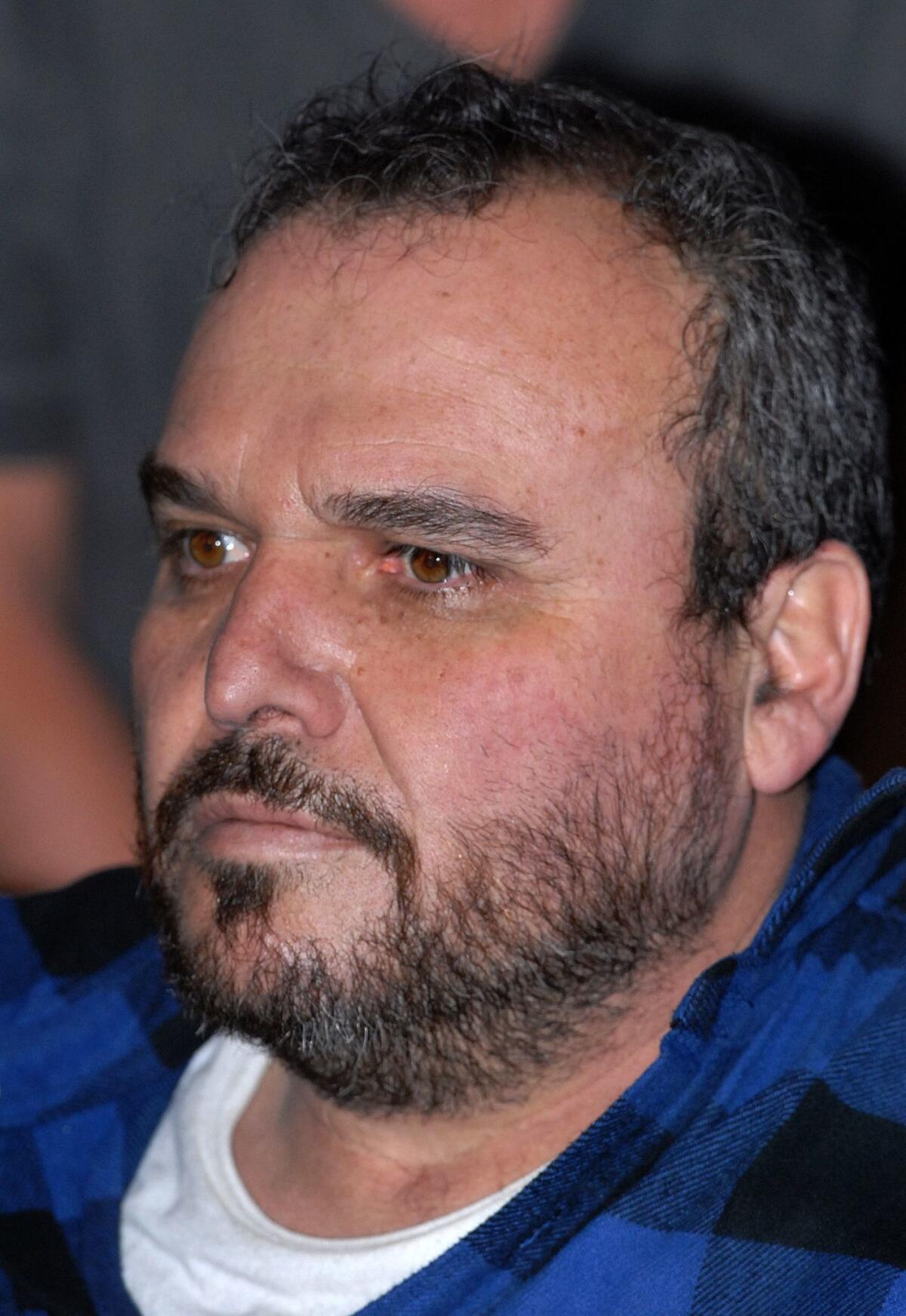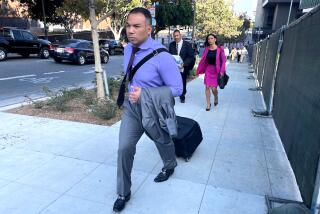Days of testimony about drugs and killings in ‘El Chapo’ trial seem to bore jurors
Jurors in the trial of Mexican drug kingpin Joaquin “El Chapo” Guzman clung to the edge of their seats Monday, heads darting back and forth like spectators at a tennis match as the defense attacked one of the prosecution’s star witnesses after nearly three days of direct examination.
“Do you know what a telenovela is?” defense attorney William Purpura asked, earning a laugh from the gallery and a shrug from Jesus “El Rey” Zambada Garcia, Guzman’s former deputy. “Have you ever written for one?”
It was a marked departure from earlier in the day, when jurors appeared to nod off as Zambada Garcia described how he and Guzman had huddled together in the brush of a clandestine airstrip deep in the mountains, clutching AK-47s and steeling themselves to open fire on the Mexican military.
Guzman “said, if they do come down, we’re going to have to kill them,” Zambada Garcia recalled while court security officers snoozed openly at the back of the gallery and Judge Brian Cogan fidgeted in his seat. “He was calm. Alert, but calm. I felt that adrenaline rush you have in a life-and-death situation.”
After three days of murder and mayhem, one dramatic escapade seemed to bleed into the next.

Eyelids fluttered as the witness — the youngest brother of Guzman’s longtime partner and purported successor, Ismael “El Mayo” Zambada — detailed how the cartel leader ordered the killing of rival Rodolfo Carrillo, who was slain with his wife outside a movie theater for refusing to shake his hand.
A diamond-monogrammed .38 pistol failed to attract more than a passing glance from the jury box, where heads bobbed as the witness recalled what his brother had told him of the vicious slaying of Julio Beltran, a fellow drug trafficker who “wasn’t playing by the rules.”
He “told me there was this like burst of bullets and they cut off his head,” Zambada Garcia testified. “The head was hanging off from one side.”
Zambada Garcia is the first high-profile cooperating witness to testify in a trial that is expected to include dozens of former drug traffickers. Guzman has pleaded not guilty to 17 counts of drug trafficking, conspiracy to murder and firearms violations.
Beginning on Wednesday, prosecutors walked Zambada Garcia through events spanning more than 20 years of service to his brother and the Sinaloa cartel. An accountant by training, he rose through the cartel’s ranks after being fired from his corporate job in Mexico City for his association with his brother. He first met Guzman after helping him escape from prison in 2001, and continued to coordinate drug shipments, meetings and killings for him until his arrest in 2008.
Not even the elaborate 2008 slaying of a corrupt judicial police commander, the fearsome hitman of longtime partner-turned-rival Arturo Beltran-Leyva, seemed to break the spell of so many days of monotonous testimony.
“They had done a simulation, saying one of his kids had been in an accident heading for school,” Zambada Garcia explained. “They sent a sicario (a hitman) to the area to step on the brakes so you could hear it, and they sent another to run to his house and tell him his son was hit. [The commander] ran out to go look for the boy, and that’s when he was killed.”
It was an early battle in an exceptionally bloody war between the Sinaloa cartel and its longtime allies, the Beltran Leyvas, Zambada Garcia told the court, before prosecutors once more redirected his attention to the details of a particular shipment of cocaine, its various costs and logistics and the specific mechanisms by which he learned it had been intercepted by the U.S. Coast Guard.
While others tapped their feet and stole glances at the clock, the defendant hung on his former deputy’s every word. Guzman watched Zambada Garcia intently as he spoke, looking away only to try to catch the eye of his wife, Emma Coronel, who mostly played with her hair and picked at her manicure, occasionally folding into herself with her head in her hands as prosecutor Gina Parlovecchio glossed the most gripping dramas to focus on the exact tonnage of a particular drug shipment or the per-kilo price that Guzman paid Zambada Garcia for cocaine he moved through his Mexico City “bodegas” between 2004 and 2008.
“If you’re supplying, you should be on top of him,” Purpura charged, grabbing Zambada Garcia’s mugshot from the rogue’s gallery in evidence at the front of the court and waving it over Guzman’s photograph to suggest that Zambada Garcia was really the man in charge. “How’s that look?”
“Fine,” the witness answered with a theatrical, open-handed shrug, eliciting guffaws from the crowd.
Jurors scribbled furiously on their legal pads as Purpura pressed Zambada Garcia on a library of fake documents, including birth certificates, passports, driver’s licenses, and even a U.S. visa in two aliases, Victor Rosas and Abraham Flores.
“And all of these are lies?” Purpura asked.
“Victor and Abraham, they’re all lies,” Zambada Garcia replied. “My name is Jesus.”
But the attorney aimed his real firepower at discrepancies between Zambada Garcia’s days of testimony at trial and the detailed depositions he’d given the government as part of his cooperation agreement, in particular why he had failed to name Guzman even once in several events to which he later testified the kingpin had been deeply involved.
Although he insisted his memories were clear, the witness allowed that certain details might have escaped him in the decade since his capture.
“I can’t guarantee you that,” he answered when Purpura asked whether he had “absolute, verbatim recall” of the events to which he’d spent three days testifying. “I’m an old man now.”
Sharp is a special correspondent.
More to Read
Start your day right
Sign up for Essential California for news, features and recommendations from the L.A. Times and beyond in your inbox six days a week.
You may occasionally receive promotional content from the Los Angeles Times.






